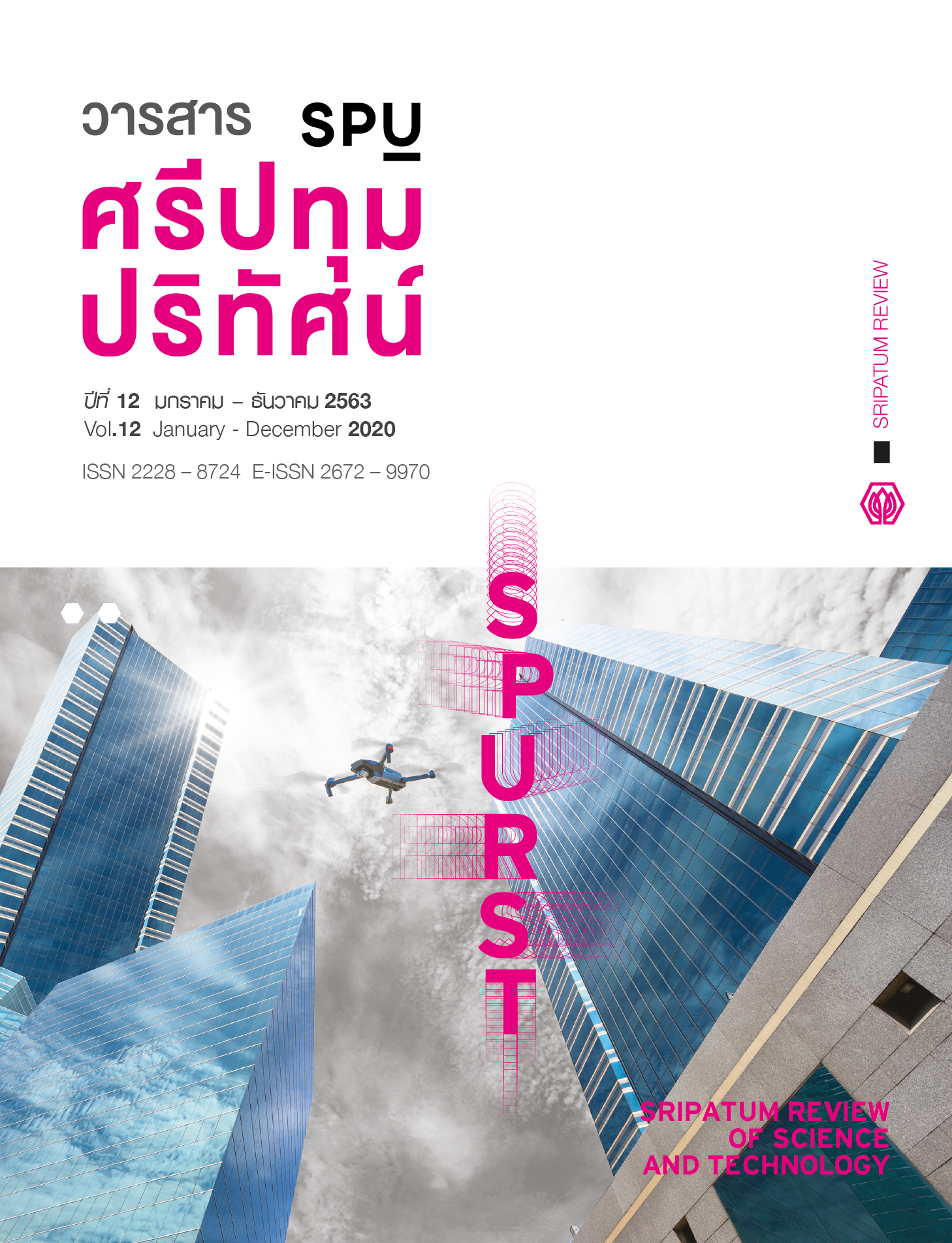The Optimal Selection of Distribution Model with Mixed Integer Programming: A Case Study of Beverage Distribution Firm
Main Article Content
Abstract
The selection of suitable product distribution model leads to the reduction of transportation costs. This research aims to study the suitable product distribution model with the application of a mixed integer programming model. Data from business partners of 30 distribution business cases in the Northeastern region was collected and analyzed by the mixed integer programming model. The LINGO 11.0 Program was applied together with the analysis of low transportation costs, including fuel cost, storage cost, truck driver wage, depreciation cost, and truck maintenance cost. The results showed that the problem of product distribution was that of NP-hard problem because there were multi distribution centers, multi customers, and multi-truck sizes. The researcher therefore proposed the proper distribution model by the application of the mixed integer programming model. The experiment was conducted with five sets of data on real production demand of the case study business. It was found that the generated mathematical model was accurate, which enabled the case study business to select the suitable beverage beverage distribution model. As a result, the transportation costs decreased by up to 72.85 million baht per year or 58.90 percent.
Article Details
References
Apiprachyasakul, K. (2014). Goods Transportation in Logistics Works. Bangkok: Focus Media and Publishing. (in Thai)
Arkararungraingkul, R., Supattananon, N., and Pimpatchim, A. (2019). The Mixed Integer Programming Model for Outbound Truck Arrangement: A Case Study of Beverage Distribution Firm. Journal of Industrial Technology, 9 (1), 41-54. (in Thai)
Bassolas, A., Gallotti, R., Lamanna, F., Lenormand, M., and Ramasco, J.J. (2020). Scaling in the recovery of urban transportation systems from massive events. Scientific Reports, 10(2746), 1-20.
Cosma, O., Pop, P.C., and Dănciulescu, D. (2020). A novel matheuristic approach for a two-stage transportation problem with fixed costs associated to the routes. Computers and Operations Research, 118(106906), 1-10.
Eiamworawutthikul, C., Manisri, C., Promwattanapakdee, T., and Jenkarn, W. (2018). Guidelines for the Calculation of Specific Energy Consumption (SEC) as Energy Performance Indicator in Transportation Operations. Sripatum Review of Science and Technology, 9(1), 118-127.
Esper Angillieri, M.Y. (2020). Debris flow susceptibility mapping using frequency ratio and seed cells, in a portion of a mountain international route, Dry Central Andes of Argentina. Catena, 189(104504), 1-9.
GSB Research. (2019). Food and beverage industry. Industry Update, 2562(1), 1-3. (in Thai)
He, Y., Qin, J., and Hong, J. (2017). Comparative analysis of quantitative efficiency evaluation methods for transportation networks. PLoS ONE, 12(4), 1-8.
Holzapfel, A., Kuhn, H., and Sternbeck, M.G. (2018). Product Allocation to Different Types of Distribution Center in Retail Logistics Networks. European Journal of Operational Research, 264(3), 948-966.
Khucharoenphaisan, R. (2009). Marketing Channels of Distribution and Logistics. Bangkok: Chulalongkorn University. (in Thai)
Orlis, C., Laganá, D., Dullaert, W., and Vigo, D. (2020). Distribution with Quality of Service Considerations: The Capacitated Routing Problem with Profits and Service Level Requirements. Omega (United Kingdom), 93(102034), 1-15.
Phongthong, P. (2018). Logistics Management for the Competitive Advantage in the Pallet Renting Business. Journal of Humanities and Social Sciences, Rajapruk University, 4(1), 91-100.(in Thai)
Solano-Charris, E.L., Prins, C., and Santos, A.C. (2014). Heuristic approaches for the robust vehicle routing problem. Lecture Notes in Computer Science, 8596, 384-395.
Supattananon, N., Supattananon, N.D., and Arkararungraingkul, R. (2019). Distribution Model Improvement with Direct Shipment Using a Mixed Integer Linear Programming. The Proceedings of the First National and International Conference of Kalasin University, Kalasin: Kalasin University, 185-197. (in Thai)
Tuzkaya, U.R., Onut, S., and Tuzkaya, G. (2014). A strategic planning methodology for the multimodal transportation systems: A case study from Turkey. Journal of Applied Mathematics, 2014(931456), 1-24.
Wisetjindawat, W., Wilson, R.E., Bullock, S., and de Villafranca, A.E.M. (2019). Modeling the Impact of Spatial Correlations of Road Failures on Travel Times during Adverse Weather Conditions. Transportation Research Record, 2673(7), 157-168.
Yap, M., Cats, O., and van Arem, B. (2020). Crowding valuation in urban tram and bus transportation based on smart card data. Transportmetrica A: Transport Science, 16(1), 23-42.
Yongpisanphob, W. (2019). Beverage industry. Krungsri Research, 2562(1), 1-13. (in Thai)
Yun, Y., Chuluunsukh, A., and Gen, M. (2020). Sustainable closed-loop supply chain design problem: A hybrid genetic algorithm approach. Mathematics, 8(84), 1-18.
Zhang, M., Hu, X., and Wang, J. (2019). A method to assess and reduce pollutant emissions of logistic transportation under adverse weather. Sustainability, 11(5961), 1-19.


